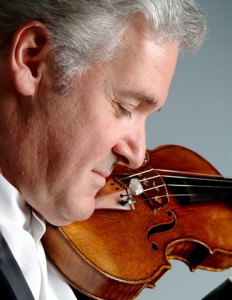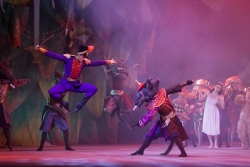No ballet is more beloved or more scorned than The Nutcracker. Classic or cliché? Everyone has their camp. Also at odds: purists, whether of the Russian or Balanchine stripe, and artistic directors looking to put a personal stamp on the Christmas tale. Perhaps the only position that everyone can agree on is the financial one: E.T.A. Hoffmann’s children’s story set to Tchaikovsky’s score is a dependable money maker for ballet companies the world over.
The Nutcracker that Septime Webre has delivered for Hong Kong Ballet (HKB) confounds all these conventions. Webre, HKB’s Artistic Director since 2017, has not so much put his own twist on a time-honoured classic as he has overhauled it completely. The question is whether this version, set in a farcical reverie of Hong Kong circa 1915, will in fact become the “Hong Kong classic” the Ballet is claiming it to be and that is meant to attract audiences for years to come. Time will tell if HKB’s investment in its financial future with this costly production will prove to be justified and only audiences of the future can say if this is indeed a ‘classic’.
The buzz about Webre’s Nutcracker is all in the details. From the minute the curtain goes up at the Hong Kong Cultural Centre, the stage is chockablock with local references and Chinese cultural symbols, from academic nods to colonial architecture, Sir Robert Ho Tung and Sun Yat Sen, to crowd pleasers like a Shanghainese movie star, Victoria Harbour and the Monkey King. Local flora and fauna abound as well: Bauhinia flowers, yellow-crested cockatoos, pink dolphins, boars, red pandas, the last tiger ever shot in Hong Kong…The list goes on and on.
As if all that wasn’t enough to look at, the already crowded set, filled with partitions and columns holding 24 paintings on loan from the Hong Kong Museum of Art, is quickly overrun with over 30 characters plus swarms of children, dolls, mice, rats and the literal army of Toy Soldiers, and we are only in Act I.
Indeed, Webre’s shoehorning of a Berlitz tourist guide into what is an already fussy narrative, coupled with designer Gabriela Tylesova’s stuffed-to-the-rafters sets, which extend into the auditorium, render a crowded, chaotic and largely unrecognizable Nutcracker. Somewhat tellingly, two unchanged mainstays from the original, Clara and the Nutcracker Prince, are relegated to a boudoir perched above the orchestra pit to wait out Act II’s voyage through the Land of Bauhinia Overkill.
Photo: Keith Hiro, Provided by The Hong Kong Ballet
Similarly, audiences must hold tightly to Tchaikovsky’s score if they want to engage in a mental “Where’s Waldo” game of identifying the original inspirations for the relooked scenes. My favourites for both choreography and punch were the high jumping Happy Valley jockeys (originally the trepak dance, or Peppermints, à la Balanchine) and, in place of the Arabian dance, a sensuous Madame White Snake with an even sexier, bare-chested male partner (greeted with appreciative “wouahs!” by a group of women at the performance I attended). Act II’s rewriting can be agreeably cute at times, thanks especially to the presence of so many children as adorable mushrooms, hammy dim sums and such, but the impression of a Disneyesque caricature of Hong Kong is hard to shake.
As for the Chinese ‘tea’ dance, audiences may rightly wonder what to expect from a Hong Kong production steeped in cultural tropes. Whereas ballet companies in North America of late have been at pains to put distance between their productions and the scene’s yellowface history, Webre supersizes it into the Cheung Chau Bun Festival, complete with the popular tower race, a parade, lion dance and general hilarity. It’s an astute repositioning of an ethnic stereotype into a cultural celebration for audiences familiar with both. If only the production were this smart as a whole.
The Nutcracker has weathered over 100 years of changing tastes, which means there is more to the story than just a girl and her creepy wooden doll. Webre’s saccharine fantasy made me think less of the Christmas story and more of Greater Bay Area narrative building. In fact, the origami boat made from a sheet of Hong Kong newspaper that whisks Clara to the Land of the Sugar Plum Fairy — a foreign invention, recuperated here as a Chinese tradition, fashioned from Hong Kong nostalgia — may be seen as a metaphor for Hong Kong today.
(The review is published simultaneously in dance journal/hk, Vol.24, No.1)
本網站內一切內容之版權均屬國際演藝評論家協會(香港分會)及原作者所有,未經本會及/或原作者書面同意,不得轉載。











